Are you a Quiet Speculation member?
If not, now is a perfect time to join up! Our powerful tools, breaking-news analysis, and exclusive Discord channel will make sure you stay up to date and ahead of the curve.
Last weekend, top players from nations worldwide gathered in Rotterdam to wage war for their respective countries. The battlefield? Team Unified Modern, with a little Limited thrown in. With so many players from every corner of the world turning their eyes to Modern, the results of this tournament were anticipated to have a larger effect on our Modern metagame than anything else excluding bannings. But can we trust the World Magic Cup results to reflect "real life" metagame trends?
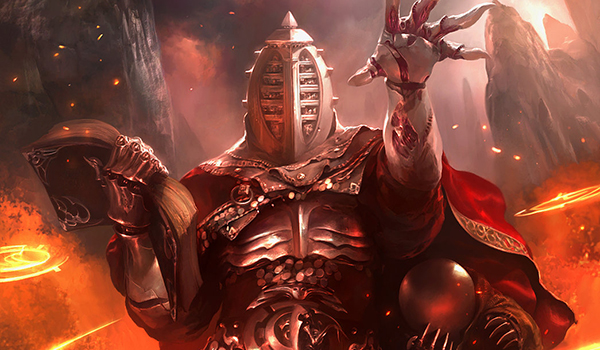
Hierarchy of Information
When we begin to analyze event results, the first thing we must do is determine the accuracy of the results we are analyzing. This is done naturally, almost subconsciously, every time we look at a decklist where the origin is known. FNM results are weighted less than SCG IQs, which are weighted less than Opens, which are weighted less than Grand Prix, and so on. In a perfect world, we would have nothing but Pro Tour results and Grand Prix influencing our metagame, leaving us a "pure" influx of sources where only the best of the best rise to the top.
The reality, as those of us familiar with Modern know all too well, is that Modern experiences peaks and valleys of popularity, which I'll refer to hereafter as "seasons." 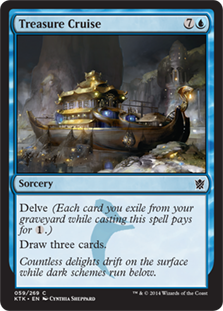 A season of closely spaced events featuring Modern results in a period of (potentially) sweeping changes to the context of the format, while a season of weeks with nothing but MTGO Modern League results can sometimes result in apparent format stagnation. In addition, set releases can play into this ebb and flow as well, with a dud release bringing about no transformation in the format, while a Khans of Tarkir-like set can throw everything into disarray.
A season of closely spaced events featuring Modern results in a period of (potentially) sweeping changes to the context of the format, while a season of weeks with nothing but MTGO Modern League results can sometimes result in apparent format stagnation. In addition, set releases can play into this ebb and flow as well, with a dud release bringing about no transformation in the format, while a Khans of Tarkir-like set can throw everything into disarray.
So where do unusual events fall into this hierarchy? The World Magic Cup is one example, as is the Star City Games Invitational, which is often split-format Standard/Modern. When archetypes can reach top tables based on factors other than individual deck composition and play alone, results carry with them an inherent danger of misinterpretation.
For example, we all have seen cases where a rogue Modern deck made Top 8 of an Invitational on the back of a perfect Standard performance, and vice-versa. How should we treat that information, especially considering the fact that others will be looking at that information as well? A solid example of this is the BW Tokens deck Eric Froehlich (and others) piloted at Worlds 2015. In that specific event, four different formats were highlighted, with Modern only seeing play in four out of 14 swiss rounds. Clearly, Modern only contributed a small percentage towards a given player’s Top 4 performance. 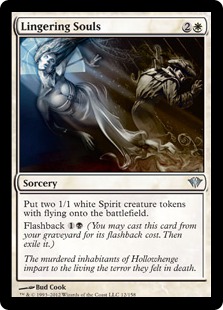 But regardless, those decklists were still published under a "Top 4" heading, whether the deck itself went 4-0, 0-4, or anything in between.
But regardless, those decklists were still published under a "Top 4" heading, whether the deck itself went 4-0, 0-4, or anything in between.
The takeaway here is that we have to take split-format results with a grain of salt, but can’t ignore them entirely. Even if the information is problematic, that won't stop other players from drawing immediate conclusions without analyzing the results as fully as we have. Looking back to the 2015 World Championships, I remember being flooded with questions regarding BW Tokens as the next "best deck" in Modern, regardless of the fact that information on how that archetype performed in-event was difficult to come by. Nobody really knew, but it didn’t matter. BW Tokens was the next big fad, and whether it did well at the World Championships or not wasn’t relevant. Eric Froehlich and others played it, which meant it "had to be good." Queue the sheep building it for themselves on MTGO (and I’m including myself in their number) only to find out later that the deck fell short of having what it takes to succeed.
[wp_ad_camp_1]
The Effect of Unified Constructed
With that, we come to the present. Teams from around the world gather to compete under the umbrella of Team Unified Modern. Four players compose a team that plays three matches, with two out of three wins taking the "team match" win. In my opinion, the team element of the tournament is irrelevant, as far as our analysis goes—what we really care about are the decklists. The big asterisk next to these results is the decklist restriction of no shared cards between the three archetypes.
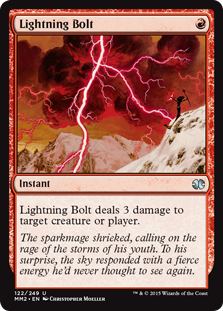 That means potentially one third the number of Lightning Bolts in the room, no Infect alongside Affinity (unless Affinity chooses to forego Inkmoth Nexus), etc. This seems like a modest twist, but in reality the implications and resulting cascades from this constriction are insane. With fewer Lightning Bolts around, is aggro suddenly the best and only choice? If players are going to be bringing aggro exclusively to the table, should we instead find a way to play Jund, even though it’s hogging all the best cards? What about decks that play a bunch of random chaff, like Dredge, Living End, and Lantern Control?
That means potentially one third the number of Lightning Bolts in the room, no Infect alongside Affinity (unless Affinity chooses to forego Inkmoth Nexus), etc. This seems like a modest twist, but in reality the implications and resulting cascades from this constriction are insane. With fewer Lightning Bolts around, is aggro suddenly the best and only choice? If players are going to be bringing aggro exclusively to the table, should we instead find a way to play Jund, even though it’s hogging all the best cards? What about decks that play a bunch of random chaff, like Dredge, Living End, and Lantern Control?
Clearly, the unique aspect of the World Magic Cup is deckbuilding, archetype selection, and positioning with this constraint in mind. This puts us (normal Modern players) in an interesting position, as essentially we are analyzing results influenced and molded by a constraint that doesn’t apply to us. A potential Top 4 of twelve archetypes might only contain at maximum four Infect lists. Card-hogging archetypes like Jund Midrange might not even show up at all. Linear strategies that employ unique effects will probably be overrepresented. All of this combines to create a prime opportunity for misinformation and analysis based on shaky foundations, but we still can’t ignore it! Other players will react this information as well—it doesn’t matter if Merfolk is a horrible deck if it takes a ton of top spots and everyone at FNM and on MTGO picks up the deck. So, let us proceed, but tread lightly.
The Results
| Place | Deck |
|---|---|
| 1st | Abzan |
| 1st | Dredge |
| 1st | Infect |
| 2nd | Griselbrand |
| 2nd | Infect |
| 2nd | Burn |
| 3rd | Ad Nauseam |
| 3rd | Infect |
| 3rd | Lantern Control |
| 4th | Affinity |
| 4th | Bant Eldrazi |
| 4th | Jund |
| 5th | Dredge |
| 5th | Lantern Control |
| 5th | UR Prowess |
| 6th | Bant Eldrazi |
| 6th | UR Prowess |
| 6th | Dredge |
| 7th | Bant Eldrazi |
| 7th | Merfolk |
| 7th | RG Titan Breach |
| 8th | Affinity |
| 8th | Bant Eldrazi |
| 8th | UR Prowess |
As an immediate takeaway, the first big piece of information are the archetypes that reached the final table. Abzan, Dredge, Grishoalbrand, Naya Burn, and two copies of Infect will be the first lists players look at to get a quick read of the event. In my experience, we can expect the general reaction to these results to be along the lines of, “Grishoalbrand is interesting, Lingering Souls may be back, Dredge is still great, and I need to start packing some Infect hate.”
Through my time analyzing results, I’ve become more and more convinced that it’s the major takeaways, the morsels of information that can be subconsciously gleaned within seconds of looking at event results, that have the most effect on week-to-week metagame shifts.  Magic players are good when it comes to doing their homework, but the majority of us won’t spend a couple hours poring over lists, comparing sideboard numbers against format hypotheses to inform our next moves. No, most people will have some snap reactions—"Infect is good," "Lantern Control?!?!" and "Oh, maybe I might try out UR Prowess"—and move on.
Magic players are good when it comes to doing their homework, but the majority of us won’t spend a couple hours poring over lists, comparing sideboard numbers against format hypotheses to inform our next moves. No, most people will have some snap reactions—"Infect is good," "Lantern Control?!?!" and "Oh, maybe I might try out UR Prowess"—and move on.
Digging a little deeper, the next most apparent piece of information here is the weighted performance of Infect compared to other archetypes like Lantern Control and UR Prowess. I find it telling that of the three teams that chose to play Infect, those teams took 1st through 3rd place, while Lantern Control took 5th and 3rd (with the third-place finish possibly due to Infect being on the team) and UR Prowess took 5th, 6th and 8th. The waters are murky here, but I’m drawing comparisons to Top 16 conversion rates in normal events, where we see an archetype doing well in the Top 16 but failing to cross the threshold into Top 8. It’s too early to call, but this kind of information has me putting flags next to Lantern Control and UR Prowess. The representation is there, but they couldn’t cross the threshold into the winner’s circle. Was the format ready for them and they ran into opposition? Or were they good, but not quite good enough? More information is necessary.
Let’s look at the information through a filter other than finish, weighted by representation:
| Archetype | Copies in Top 8 |
|---|---|
| Bant Eldrazi | 4 |
| Dredge | 3 |
| UR Prowess | 3 |
| Infect | 3 |
| Affinity | 2 |
| Lantern Control | 2 |
| Abzan | 1 |
| Ad Nauseam | 1 |
| Burn | 1 |
| Griselbrand | 1 |
| Jund | 1 |
| Merfolk | 1 |
| RG Titan Breach | 1 |
Again, from an entry level, it’s easy to see that three of the top pre-Worlds decks show up here as most-represented (Eldrazi, Dredge, and Infect). Each deck enjoys relatively minor crossover with other archetypes, so playing them was essentially free, outside of the Inkmoth Nexus scenario we outlined above. Bant Eldrazi taking Path to Exile means we can’t play any midrange strategy that might want it like Abzan or Jeskai, but Bant Eldrazi plays that midrange role itself, so the loss isn’t that great.
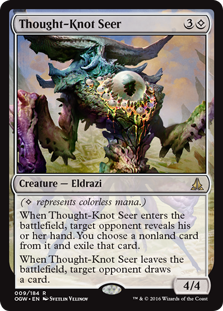 Another telling piece of information is the lack of dedicated midrange among the top tables. One copy of Jund and one copy of Abzan is curious, especially considering the plentiful amount of juicy aggro targets for the removal-heavy midrange lists to beat up on. Here it’s clear to see that the "unified" constraint pushed an already combo-focused format even more so, as players struggled to find strategies that didn’t compete for cards. Almost every team had two of three players fighting with some sort of linear aggro or combo strategy, be it Burn, Lantern Control, Dredge, Affinity, etc. Against a field that diverse, Jund, Abzan, and other reactive midrange strategies struggled against the variance of the field. When Terminate is good against half the field but dead against the rest, natural attrition is bound to wear these archetypes down.
Another telling piece of information is the lack of dedicated midrange among the top tables. One copy of Jund and one copy of Abzan is curious, especially considering the plentiful amount of juicy aggro targets for the removal-heavy midrange lists to beat up on. Here it’s clear to see that the "unified" constraint pushed an already combo-focused format even more so, as players struggled to find strategies that didn’t compete for cards. Almost every team had two of three players fighting with some sort of linear aggro or combo strategy, be it Burn, Lantern Control, Dredge, Affinity, etc. Against a field that diverse, Jund, Abzan, and other reactive midrange strategies struggled against the variance of the field. When Terminate is good against half the field but dead against the rest, natural attrition is bound to wear these archetypes down.
It’s significant, then, to seen Bant Eldrazi perform so well. Against most of the aggressive decks in the field, Bant Eldrazi is the de facto control role in the matchup, looking to trade ahead with Matter Reshaper and control the board with fatties like Thought-Knot Seer and Reality Smasher. Against combo decks, Eldrazi still has a proactive, fast gameplan that allows them to pressure the opponent and end the game quickly. It’s clear to me that in a diverse format made even more diverse by the "unified" constraint, Bant Eldrazi was the right midrange deck of choice.
A Closer Look at Decks
Abzan, by Petros Tziotis (1st, World Magic Cup 2016)
With that being said, Abzan came out on top! Even with all the talk of Bant Eldrazi being the better midrange deck, Abzan still took home first, while teams that played Bant Eldrazi could only manage 4th, 6th, 7th, and 8th place.
Everything up to this point has been informed speculation, and here I can't offer anything different, but I’m choosing to look at this result similarly to the Infect/Affinity results. With shared cards, players could choose Infect or Affinity, but not both. 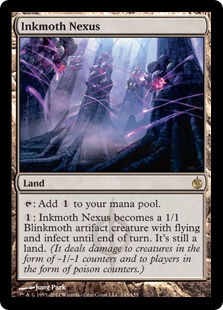 The fact that Infect took 1st through 3rd while Affinity placed 4th and 8th suggests that either Infect is better, or players were better prepared for Affinity. As far as Abzan vs. Eldrazi goes, I’m imagining the same thing happened. Most people in the field came to similar conclusions regarding the strength of Eldrazi on the weekend, so they planned accordingly to be ready for it come Top 8 time. Abzan, on the other hand, did similar things as Eldrazi but attacked from an unsuspecting angle. While other decks were busy trying to go under Eldrazi, Abzan was instead ripping apart their hand and flooding the board with Lingering Souls tokens.
The fact that Infect took 1st through 3rd while Affinity placed 4th and 8th suggests that either Infect is better, or players were better prepared for Affinity. As far as Abzan vs. Eldrazi goes, I’m imagining the same thing happened. Most people in the field came to similar conclusions regarding the strength of Eldrazi on the weekend, so they planned accordingly to be ready for it come Top 8 time. Abzan, on the other hand, did similar things as Eldrazi but attacked from an unsuspecting angle. While other decks were busy trying to go under Eldrazi, Abzan was instead ripping apart their hand and flooding the board with Lingering Souls tokens.
So why Abzan and not Jund? For me, it comes down to threats. The ability to play Lingering Souls, alongside the albeit expensive Siege Rhino, gives Abzan the threat density to apply pressure to combo opponents, while at the same time disrupting them with discard. Abrupt Decay is much better at dealing with problematic permanents like Ensnaring Bridge, and can still hit Thing in the Ice and all the aggressive things in the format. Terminate, at the end of the day, is still just Terminate.
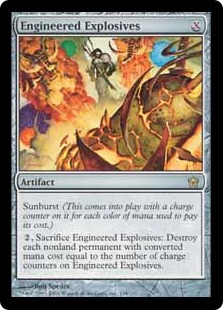 I could highlight a couple other decks, but I’m running a little long here and I want to talk a bit about deck selection strategy before we head out. For those looking for more decklists, I’d like to point you in a couple directions, with some notes on what I found interesting:
I could highlight a couple other decks, but I’m running a little long here and I want to talk a bit about deck selection strategy before we head out. For those looking for more decklists, I’d like to point you in a couple directions, with some notes on what I found interesting:
- Infect with a 2/2 Apostle's Blessing/Blossoming Defense split, and Ravenous Trap in the board for Dredge!
- Bant Eldrazi with maindeck Engineered Explosives! Not bad against all the Infect, Affinity, UR Prowess, and Ensnaring Bridges running around.
- I’m of the opinion that UR Prowess was played because Dredge decks needed the Jund lands. Two of the teams that played UR Prowess also played Dredge, but one didn’t, so who knows. I still think Death's Shadow Zoo is a better version of this archetype, but both have their merits. Maybe we’ll explore this more if the deck puts up results post-World Championships.
Final Points
With all this talk about midrange being bad, it’s clear to me there was an apparent effort by teams to put at least one midrange list into the team composition. If we’re counting Bant Eldrazi among their number, five of eight teams played at least one midrange strategy, with one team fitting in both Jund and Eldrazi. 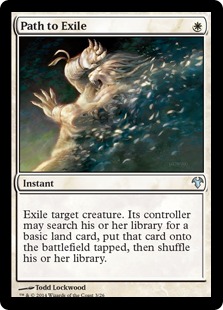 It appears like a concerted effort on the competitors' behalf to "play the field," bringing a midrange deck to the table that could disrupt and attack all the aggro and combo.
It appears like a concerted effort on the competitors' behalf to "play the field," bringing a midrange deck to the table that could disrupt and attack all the aggro and combo.
This might not seem that relevant post-event, but it suggests a higher representation of midrange (particularly Bant Eldrazi) than I think we would have seen given normal conditions. Be careful when looking at Bant Eldrazi as the most-played deck, and react accordingly. Then again, others might do just that, so do we prepare for an uptick in Bant Eldrazi? Or will players avoid it because they think it’s in the format’s sights? Therein lies the eternal dilemma.
Moving forward, it’s difficult to gauge the sort of fallout that will come from results like these. It’s hard to have any concrete takeaways from the event because almost everything is predicated on the "unified" constraint and the gamesmanship that comes with competitors looking to play the field. The World Championships were absolutely more "combo-y" than normal, but what does that mean for next week? Will the midrange players stay home in the face of this apparently hostile field? That would allow combo to take over even more...
I’ll certainly be dwelling on this over turkey. Thanks for reading, and happy Thanksgiving!
Trevor Holmes
The_Architect on MTGO
Twitch.tv/Architect_Gaming
Twitter.com/7he4rchitect


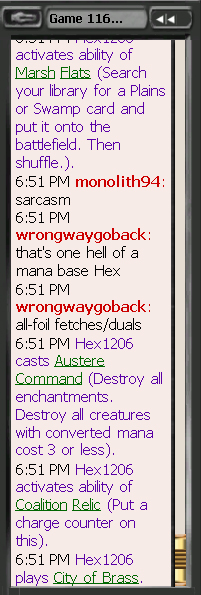



LOL had to get the shot at BW Tokens (My pet deck and pretty solid choice currently imho) in there didn’t you?
Good article, definitely agree with the analysis, I think we’ll be seeing less Bant Eldrazi as the player base seems to be a bit on the paranoid side in general and I think that will push people more towards the “don’t play it it’s in the format crosshairs” belief.
Thanks for the article Trevor. I really enjoyed the in depth analysis and only really disagreed with you when you said “I could highlight a couple other decks, but I’m running a little long here”…
A question for you at Modern Nexus: how are you going to tackle the WMC issue when you release the Metagame Analysis after next?